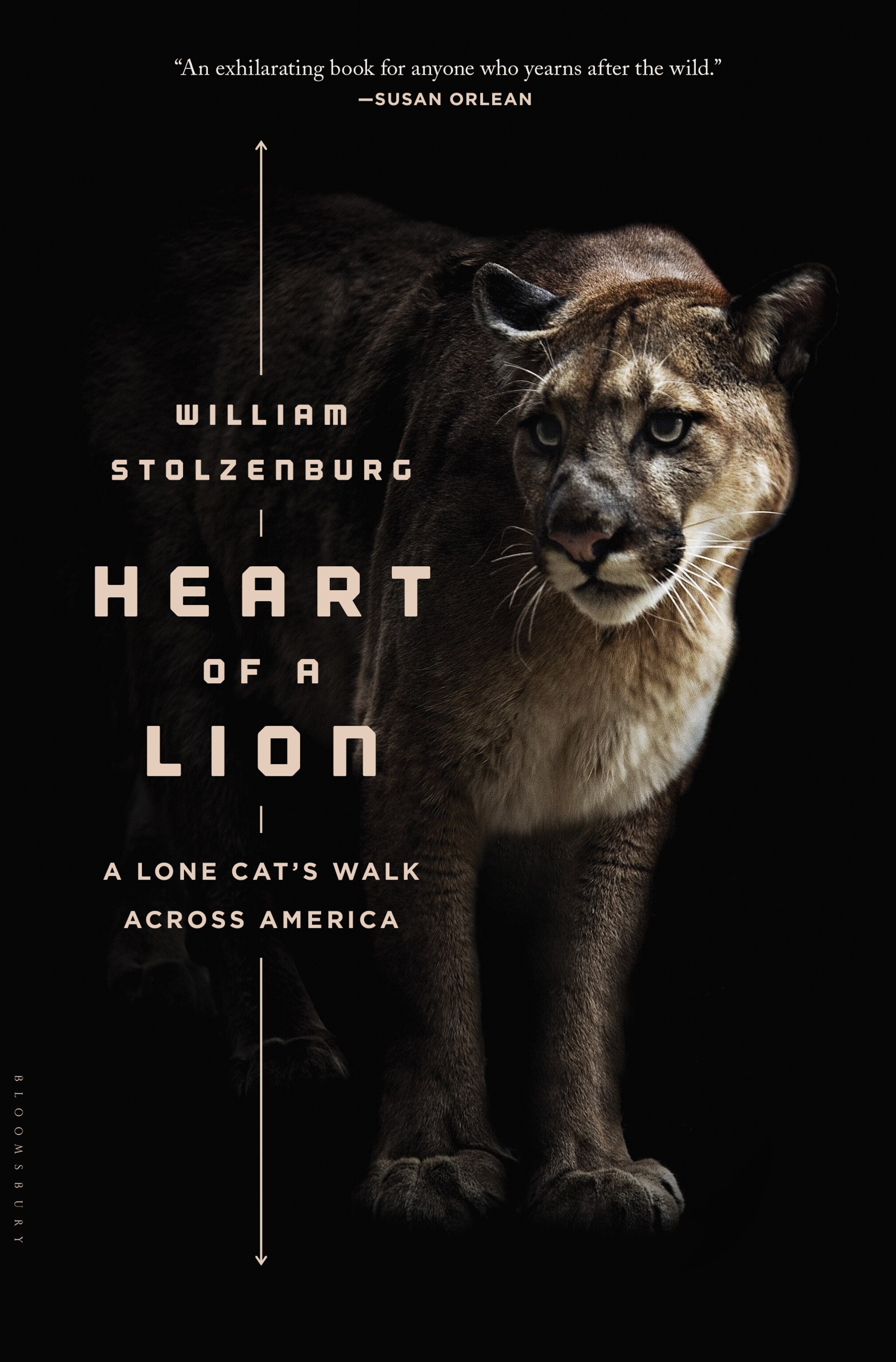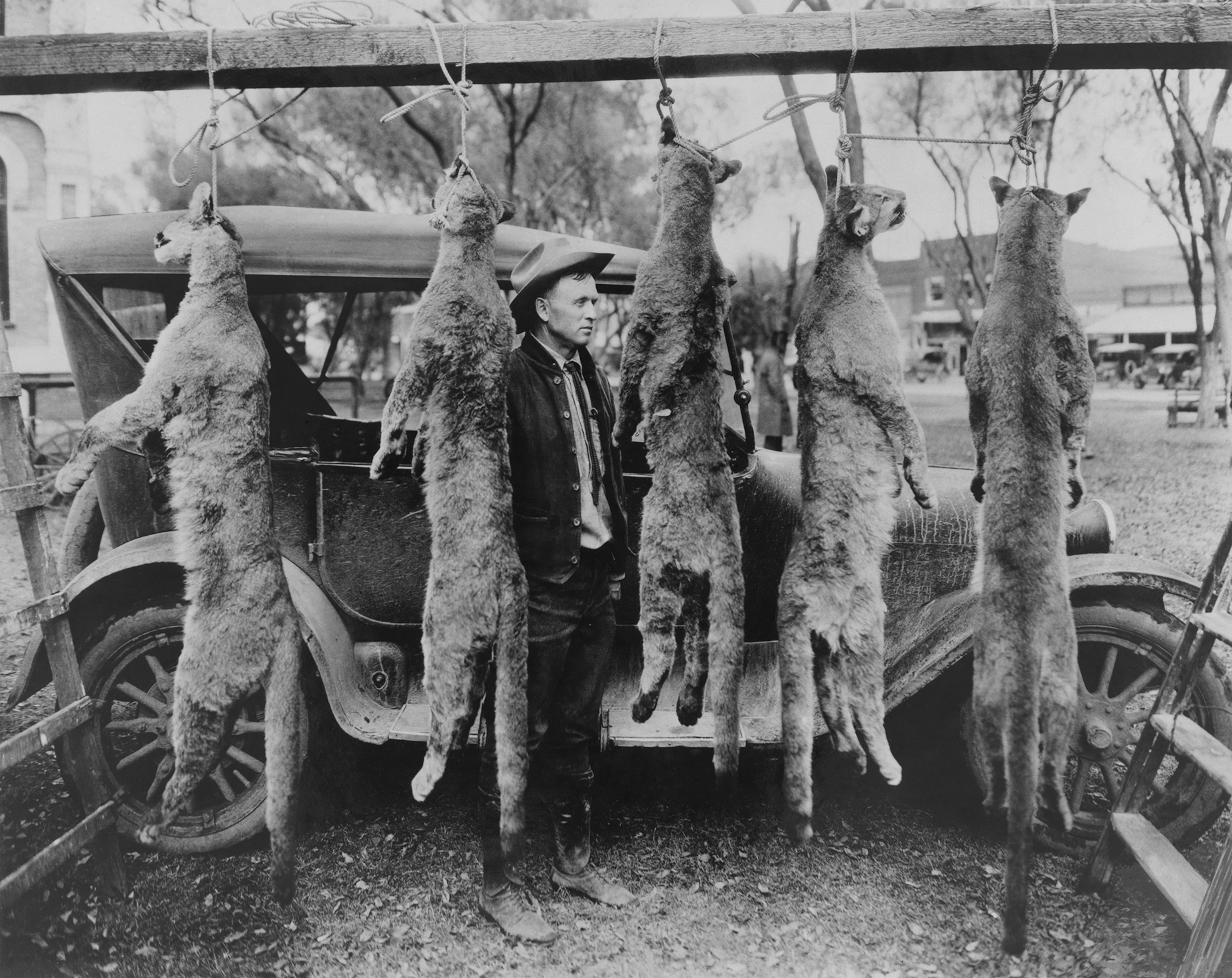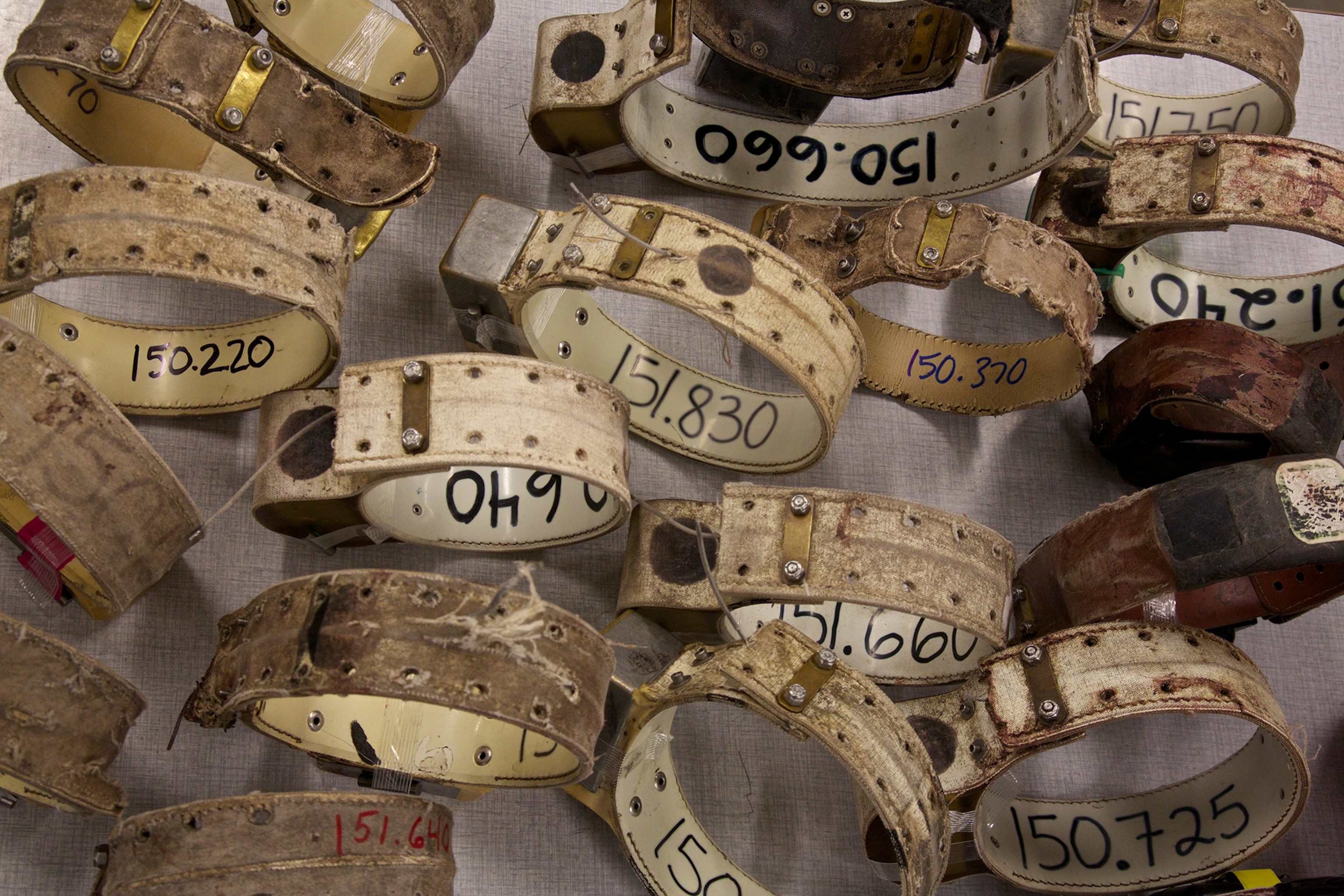
A Cougar's Thousand-Mile Quest to Find a Mate
“It was one of the most spectacular journeys by an animal ever recorded.”
In the late summer of 2009, a young male cougar set off from the Black Hills of South Dakota to look for a mate. And kept going—east across the Great Plains to the Upper Peninsula of Michigan and on to New England, through backyards and parking lots, across highways and railroad tracks, driven by the most powerful force on earth. Wherever he appeared, he caused a mixture of awe and panic. Along the way, like Hansel and Gretel’s bread crumbs, he left a genetic trail—tufts of fur, scat, leftover kills—that would eventually confirm what no one believed possible. (Learn how cougars could spread throughout the Midwest.)
William Stolzenburg chronicles the mountain lion’s epic journey in Heart of a Lion: A Lone Cat’s Walk Across America. Speaking from his home in Reno, Nevada, he explains why cougars have a bad rap; how anyone in South Dakota with a $28 hunting license can shoot one; and how, with more tolerance and some adjustments to our lifestyles, we can happily coexist with these magnificent animals. (Find out how cougars are making a comeback.)

One of my favorite children’s books was The Incredible Journey, by Sheila Burnford. This cougar’s odyssey across America was even more incredible, wasn’t it?
As far as we know, he started out from the Black Hills of South Dakota sometime in the late summer of 2009. At that time he was probably about one and a half years old, a young male just coming into adulthood. As most young males do, he set off in search of a mate. But instead of going west, as most lions in that part of the country do, he headed east into the Great Plains. Over time he showed up in the Twin Cities of Minnesota and in Wisconsin. He disappeared for a couple months, then shows up almost two years later, 30 miles from Manhattan, in Greenwich, Connecticut. In all he probably traveled 2,000 to 5,000 miles, enough to cross the country twice. He forded all the major rivers of the East, navigated highways and an international boundary. It was one of the most spectacular journeys by an animal ever recorded.
Cougar expert Chris Spatz called the lion’s journey “an epic of tragic love.” Do we know why he set off—and what made him go on?
Young male cougars come from a society in which they are portioned out by territories. Big males control big territories encompassing several females. So the young males have a choice: try to fight the reigning males, in which case they’re likely to get killed; or head out and look for another place that has females. This guy was looking for love. He went all that way searching, but not finding it. And that’s the tragedy of this epic.
You write that his journey began in the “the most idyllic and dangerous piece of lion habitat for 2,000 miles.” Put us on the ground in South Dakota.
Unfortunately, for the most part, the people in charge of the cougar in South Dakota are not sympathetic to the cause. They have a constituency of ranchers who haven’t had cougars in their midst for a century and don’t want them back. In the eastern plains in South Dakota, there is a hunting season 24-7, 365 days a year. A cougar that wants to leave the Black Hills has to run one of the most dangerous gauntlets imaginable. Anyone with a $28 hunting license can shoot a cougar. Even if they don’t have a license, they can shoot one, then claim they were threatened by that animal and no one will prosecute. Others are simply killed under the motto of “shoot, shovel, and shut up.”
Give us a brief history of the American cougar—and the hysteria it has generated among the public.
Cougars are one of the most successful big cat species. They occur all the way from the northern territories of Canada to Patagonia. But they’ve gone through some pretty tough times. When early European settlers arrived in this country, they rapidly started eradicating cougars, pushing them westward with the settlement of the country.
Cougars were given a lot of colorful names: painter, ghost cat, Indian devil cat.

The common misconception was that these animals were out to kill people. So the cougar became a creature of legend—jumping out of trees onto horseback, chasing people, and even breaking down doors. All this has been disproven by science. But that’s the way the animal was perceived. It was almost regarded as a duty by America’s early white settlers to kill any cougar they saw.
There was a significant uptick in lion attacks in the 1970s, which fueled public fears about cougars. Describe a few of these incidents—and why you think this increase occurred.
We don’t really know. It first came on the radar in the '70s and '80s. But it was in the '90s and early 2000s that we had some of the most graphic and publicized attacks. Two occurred in one day in Southern California, both on mountain bikers. One was a woman named Annie Hjelle, who was thrown from her bike by an attacking cougar, then gripped like prey. Her friends came running and started pelting the animal with rocks. The cougar had a hold of her face but she finally managed to free herself and, after many plastic surgeries, she’s healthy again and speaks nothing bad of the cat. That same day, they found another mountain biker who, it is believed, was killed by the same cougar.
It’s not completely clear why this happened. One reason is that we are moving into their habitat so there are more opportunities for these bad encounters. We are also killing thousands of cougars every year, and this is creating chaos in their societies and promoting some of these aberrant individuals. As a result of these graphic incidents, states that have cougars started to rethink the way they manage them. They make the cougar appear as a looming threat, something that has gotten out of hand and needs to be severely dealt with. But attacks have actually gone down since then. We haven’t had a human death since 2008.

Writing in Harper’s Magazine, author Jay Kirk called the cougar “the most metaphysical mystery in American natural history.” Is there really a “cougar cult”?
[Laughs] There is a kind of cult out there. Many people believe not only have they seen cougars but that cougars are living among us in the East, in places where science has not yet documented them, like supernatural beasts! Not only do they believe in them, they are out looking for them and supposedly gathering thousands of sightings. [Laughs] But when experts go out and look at these sightings, they find the tracks of a golden retriever or flush a house cat out from under a barn. There are also a lot of pranksters, who love to use Photoshop to spread this idea that cougars are all over the place. In fact, most of these pictures come from the West. It’s a bit like UFOs. [Laughs]
From Minnesota the cougar crossed Wisconsin into Michigan’s Upper Peninsula, where he faced one of his greatest obstacles. Describe that part of the journey.
He came to the St. Marys River, which is also the international boundary between Ontario and the U.S. It appears that instead of crossing the river in the most treacherous place, he went downstream to a little archipelago of islands on the rushing river. We think we know this because scientists have done winter tracking by airplane over that same area and seen all sorts of tracks of wolves, coyotes, and other animals.
In the movie Bringing Up Baby, Katherine Hepburn famously says to Cary Grant, “There aren’t any leopards in Connecticut, are there?” Now there was a cougar. Tell us about his amazing re-entry onto the scene—and his tragic death.
[Laughs] It had been months since his last sighting in the Upper Peninsula of Michigan. Then, all of a sudden one June afternoon, he shows up in southern Connecticut, in Greenwich of all places. He walks through somebody’s backyard! [Laughs] The guy is just amazed. He has a quick look at the animal, then runs back inside. The animal circles his house and then heads down a path. The man got a picture, which didn’t come out very well, but it hit the news pretty soon thereafter. People started going crazy. They put a lockdown on a boys’ school; the American Cancer Society, which was having a fund raising walk, shut 700 competitors inside a gymnasium out of fear of this animal.
The next time he showed up was at night, as a woman was driving on the Wilbur Cross Parkway, outside of Milford, Connecticut, about 40 miles from Greenwich. In her headlights, she saw what she thought was a deer. She didn’t have time to stop and the two collided. She pulled over to the side of the road and called the state police. A trooper came out and shined his flashlight light on our cougar.

DNA tests revealed “an unprecedented forensic odyssey.” Explain how the science worked.
After the cougar was killed, he was taken to the Connecticut Department of Energy and Environmental Protection. They looked him over and sent samples of flesh from his tongue to a genetics lab in Missoula, Montana, which has the country’s largest database of cougar DNA. During his journey, he had left signs of himself, like bread crumbs, all along his route: bits of hair, places where he bedded or had gone through a thorn bush, feces, blood. As he was leaving these signs, he was being tracked by a trail of biologists, who sent this evidence back to the lab in Missoula. It was like his genetic fingerprint. And when they ran a screening, five DNA samples matched. Everybody was stunned.
You say, “Along the way the lion had quietly disarmed those who would grab for their guns.” Is the future for the cougar looking brighter?
That remains to be seen. We did see a lot of support for this animal along the way. We were also reminded of the fear that is still out there. All it takes is one person with a gun. These animals are going to need help to re-establish themselves on the East Coast, because the Connecticut lion is one of dozens who’ve tried that trip but failed. What you need for these animals to re-establish a population are females. But females have never made such a long trek and those that have tried have been killed en route.
What can National Geographic readers do to protect the cougar?
It’s a matter of tolerance. We’ve learned that these animals are pretty good neighbors, even in really crowded conditions. In California, for example, cougars are living right under people’s noses and they’re doing pretty well there. But it takes tolerance and adjustment. If you’re living in a rural area that has cougars, you may need to bring your pets in at night or guard your livestock a bit better—things that are not asking a whole lot of society but which will make it a lot easier for these animals. Tens of thousands of cougars remain in the U.S., which sounds pretty good, but quite a few are being killed every year. The idea that they are running rampant everywhere is simply not true.
This interview was edited for length and clarity.
Simon Worrall curates Book Talk. Follow him on Twitter or at simonworrallauthor.com.








